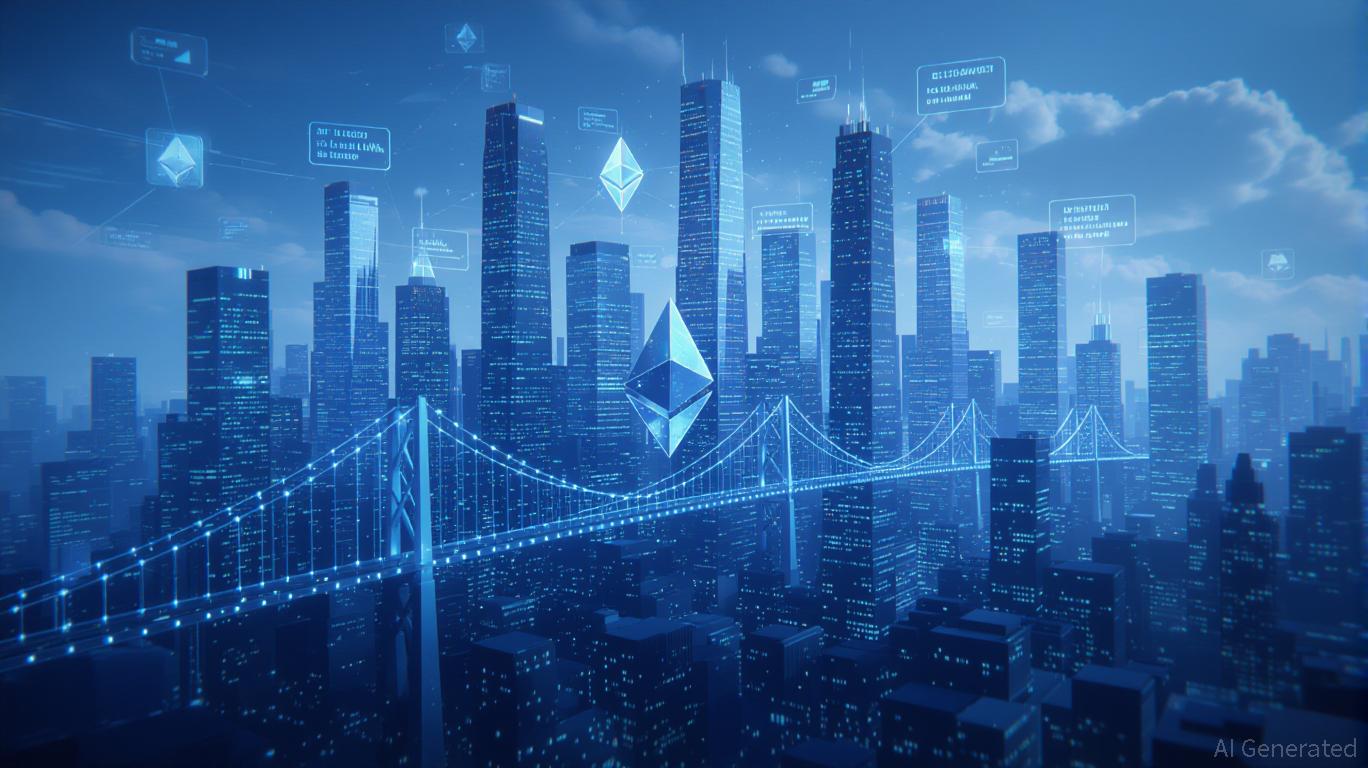Heading Towards 2026: Top Blockchain Companies to Watch According to VanEck
Taking Stock of Key Long-Term Leaders in the Blockchain Industry
Original Author: Drew Anderson, VanEck
Original Title: Top Blockchain Companies to Watch Leading into 2026
Original Translation: Lüdòng Xiǎogōng, BlockBeats
Key Points:
- Leaders in the blockchain industry are no longer limited to a single field but are spread across mining, fintech, energy, and even semiconductor industries.
- Major companies like Coinbase, Nvidia, and Block are fully committed to driving the real-world application of blockchain technology.
- As we move towards 2026, asset tokenization, stablecoins, and on-chain settlement are fundamentally reshaping the capital markets.
What is Blockchain? Why is It Important to the Crypto Space?
Blockchain is essentially a decentralized digital ledger that records transactions via a computer network, ensuring transparency, security, and immutability without the need for a centralized authority. Each "block" on the chain contains a set of validated transactions that, once added, cannot be altered—creating a trusted, tamper-proof record.
This technology is the cornerstone of all cryptocurrencies, enabling peer-to-peer value transfer, smart contracts, and decentralized applications (DApps). By eliminating intermediaries and reducing fraud risks, blockchain has become a key enabler of crypto-economic growth and trust-building.
As blockchain technology matures and integrates into the mainstream financial system, the "on-chain economy" is rapidly evolving. Against this backdrop, a growing ecosystem of companies and investment tools is driving this transformation: they are building infrastructure to support digital assets, expanding access to tokenized markets, and creating new investment channels for blockchain innovation. These leaders are not only shaping the future of decentralized finance (DeFi) but also redefining how value is created, exchanged, and protected in the global economy.
Top Blockchain Companies to Watch
The on-chain economy spans multiple industries, each playing a unique role in supporting, expanding, and innovating within the blockchain ecosystem. From digital asset exchanges facilitating transactions to mining firms securing networks, and to fintech companies bridging traditional finance with DeFi, here are various key leaders worth watching as we move towards 2026:
(Note: The NODE mentioned in the article is the on-chain ETF code under VanEck)
Trading Platform
Coinbase Global Inc. (COIN) (holding 2.58% of NODE's assets)
As the largest cryptocurrency exchange platform in the United States, Coinbase is the gateway for millions of investors to access, trade, and custody digital assets. Its institutional-grade services and regulatory leadership continue to make it a cornerstone of the crypto economy.
Robinhood Markets Inc (HOOD) (holding 2.24% of NODE's assets)
Known for "democratizing stock trading," Robinhood has expanded into the crypto space, providing a convenient entry point for retail investors into digital assets. By integrating traditional stocks and cryptocurrencies on the same platform, it is blurring the boundaries between the traditional financial world and the blockchain industry.
Mining
Core Scientific Inc. (CORZ) (holding 3.93% of NODE's assets)
As one of the largest Bitcoin miners in North America, Core Scientific is transcending mere cryptocurrency mining, transforming its infrastructure to support artificial intelligence (AI) and high-performance computing workloads—successfully bridging two of the fastest-growing digital frontiers.
Cipher Mining INC. (CIFR) (holding 6.42% of NODE's assets) & Bitfarms Ltd (BITF) (holding 1.10% of NODE's assets)
These two companies have recently shown impressive performance. With the strengthening of the Bitcoin price and network activity, they represent a strong rebound in the mining industry.
Traditional Finance Enablers and FinTech
Mercadolibre Inc. (MELI) (holding 1.07% of NODE's assets)
Often referred to as the "Latin American Amazon," MercadoLibre has grown into a fintech giant. It has integrated digital payments and crypto services into its e-commerce ecosystem, accelerating financial inclusion across the entire Latin American region.
Asset Management Companies and "Hodlers"
MicroStrategy Inc. (MSTR) (holding 0.24% of NODE's assets)
As the largest corporate holder of Bitcoin, MicroStrategy has transformed from a software company into a de facto Bitcoin investment vehicle. Its treasury strategy highlights a steadfast belief in Bitcoin as a long-term store of value.
Galaxy Digital Inc (GLXY) (comprising 4.35% of NODE holdings)
A diversified digital asset financial services firm, with business lines spanning the transactional, asset management, and investment banking services of the crypto economy, it is a key gateway for institutional investors entering the blockchain market.
Energy Infrastructure
Kinder Morgan Inc. (KMI) (comprising 0.54% of NODE assets)
As a major U.S. natural gas supplier, Kinder Morgan plays an indirect yet crucial role in the crypto economy — providing energy to data centers and mining operations that uphold the blockchain network's functioning.
Exploring Investment Ideas: What Real-World Applications Will Blockchain Have by 2025?
Blockchain is often viewed as a backend technology, but by 2025, it is bringing tangible transformations to fund flows, capital market operations, and institutional liquidity management. The current narrative revolves around tokenization, programmable settlements, and bringing interest-bearing assets onto the chain.
Several typical use cases include:
Cross-Border Payments: Imagine a global merchant needing to pay suppliers in dozens of countries but no longer relying on the SWIFT system and banks. Stripe has rolled out USDC payments in over 50 countries, enabling enterprises to settle instantly using stablecoins, eliminating the delays and high forex costs of traditional methods.
On-Chain Financing: In addition to payments, stablecoins are now used for large-scale collateralization and funding of on-chain lending. Visa's analysis shows that by 2025, monthly lending volumes hit new records, underscoring stablecoins' key role in DeFi money markets as operational capital.
Institutional Settlement: Large banks are also rethinking the underlying infrastructure of finance. JPMorgan's Kinexys platform allows institutions to issue tokenized securities as collateral, circulating between different venues, eliminating the friction costs of traditional settlement.
These examples hint at a broader shift: capital markets are becoming more modular, liquidity more dynamic, and assets are gaining a 'programmable layer.' In this new world, blockchain is no longer an experiment — it is becoming infrastructure.
Disclaimer: The content of this article solely reflects the author's opinion and does not represent the platform in any capacity. This article is not intended to serve as a reference for making investment decisions.
You may also like
Bitcoin Updates: Bitcoin Faces 23.6 Fib Level—Could Past Trends Spark an Altcoin Recovery?
- Bitcoin dominance fell to 59% at the 23.6 Fibonacci level, signaling potential altcoin rotation amid ETF outflows and price declines. - Corporate Bitcoin accumulation grows, with Hyperscale Data holding $70.5M in Bitcoin (77% of market cap) and Bitfarms holding $156M in Bitcoin. - Analysts highlight macroeconomic pressures and regulatory uncertainty as constraints on altcoin growth despite technical indicators suggesting capital rotation. - Market focus remains on Bitcoin stabilization above $80,000 and

Interoperability Fuels DeFi’s Evolution as Hemi and LI.Fi Connect Blockchains
- Hemi and LI.Fi expanded crosschain interoperability by integrating LI.Fi's bridge and swap API, enabling seamless token transfers across EVM and non-EVM networks like Solana . - Users can now transfer assets like USDC between chains in single transactions using routing tools, reducing friction for DeFi participants and developers. - The partnership standardizes crosschain workflows, eliminating fragmented bridge solutions while supporting liquidity aggregation across EVM, Solana, and alt-VMs. - By stream

Vitalik Buterin's Latest Support for ZK Technology and What It Means for the Cryptocurrency Industry
- Vitalik Buterin is driving a blockchain shift via ZK tech, enhancing Ethereum's scalability and privacy. - ZK infrastructure's $28B TVL surge highlights projects like zkSync Era and StarkNet boosting DeFi and gaming. - Investors target EVM-compatible ZK rollups and privacy toolkits, aligning with Ethereum's ZK roadmap.

XRP News Today: IMF Cautions That Tokenized Markets Could Face Collapse Without International Cooperation
- IMF warns tokenized markets risk destabilizing flash crashes due to rapid growth and interconnected smart contracts. - XRP highlighted as potential cross-border payment solution but not endorsed, alongside Stellar and Bitcoin-Lightning hybrid models. - Global regulators intensify oversight of tokenized assets, with ESMA, SEC, and central banks addressing governance and liquidity risks. - IMF stresses urgent need for coordinated policy frameworks to prevent fragmentation and systemic vulnerabilities in ev

